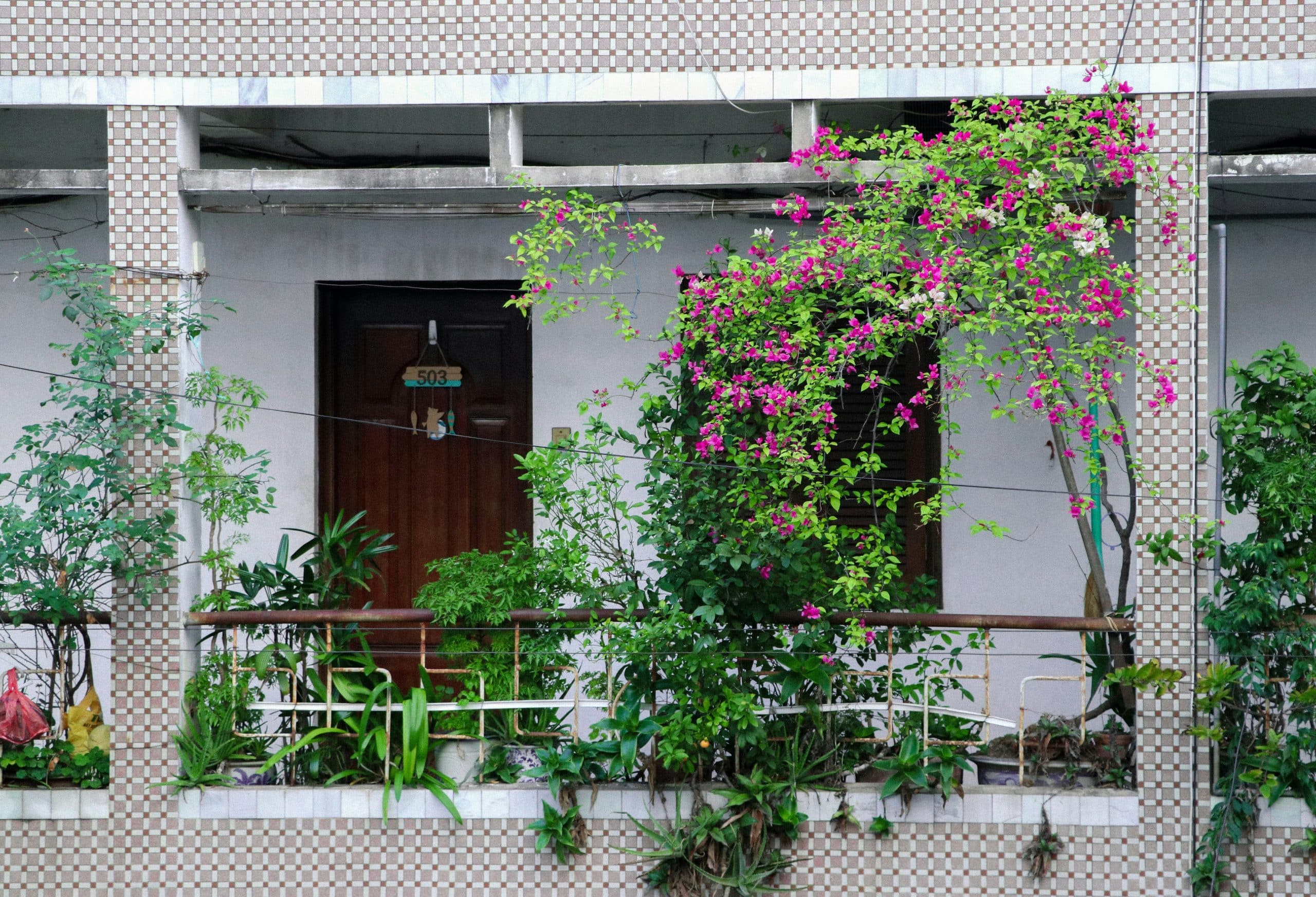In the concrete jungles of today’s urban landscapes, the desire to connect with nature is a common sentiment. A balcony garden can be a perfect solution for those of us without the luxury of a backyard. Creating a green oasis amidst the high-rises might seem like a daunting task, but it’s easier than you think. It involves careful selection of plants, using the right containers, and a bit of gardening knowledge. Today, we will guide you on how to design your balcony garden, transforming your small outdoor space into a green haven.
Choosing the Right Plants
Choosing the right plants for your balcony garden is crucial. This depends on the amount of sunlight that your balcony receives and the climate of your city. Some plants are more suited to full sun, while others grow best in partial shade.
Also to see : Creating a cosy reading nook at home
Small trees like the Japanese Maple, fruit trees like lemon or apple, and dwarf varieties of large plants, can create a sense of depth and height in your balcony garden. Varieties of bamboo can also be used to create a privacy screen.
For lower levels, consider herbs, vegetables, and flowering plants. Herbs such as basil, rosemary, and mint are easy to grow in pots and require little space. Lettuce, spinach, and cherry tomatoes can be grown in containers, adding a fresh touch to your kitchen supplies.
Also to discover : Shoe storage ideas
Flowering plants add color and attract pollinators. Some low maintenance options include marigolds, geraniums, and petunias. For cooler, shadier balconies, impatiens and begonias are great choices.
Incorporating Containers and Pots
Containers and pots are essential components of balcony gardening. They come in a variety of sizes, shapes, and materials.
For a cohesive look, consider containers that match or complement each other. They can be in the same color family or material. Terracotta, ceramic, and wood are classic choices but require regular watering as they can dry out easily. Plastic and fiberglass options retain moisture better and are lighter, making them ideal for balconies. Remember to choose containers with drainage holes to prevent waterlogging.
Vertical gardening is a great way to make the most of your limited space. You can use tiered plant stands, hanging pots, or wall-mounted planters. Climbing plants like ivy or jasmine can be trained up trellises or railings, creating a wall of green.
Nurturing Your Garden
Maintaining a balcony garden requires some gardening know-how. Regular watering is essential. The amount of water needed will depend on the type of plant, the size of the pot, and the climate. Watering is best done early in the morning or late in the evening when temperatures are cooler.
Fertilizing your plants will ensure they grow healthily. Most plants benefit from a slow-release fertilizer applied in the spring and late summer.
Pests can be a problem in balcony gardens. Regularly check your plants for signs of infestation. If found, natural remedies like neem oil or insecticidal soap can be used.
Adding Elements of Comfort
A balcony garden should not only be a place for plants to thrive but also a comfortable space for you to relax. Incorporating elements of comfort can turn your garden into an outdoor living room.
Consider adding outdoor furniture. A small table and chair set or a bench can provide a spot to enjoy your morning coffee or dine alfresco. Outdoor rugs, cushions, and throws can add a touch of coziness.
Lighting is another important aspect. Fairy lights, lanterns, or solar-powered lights can create a warm, inviting atmosphere.
Making it Personal
The last step in designing your balcony garden is to add personal touches. These will reflect your style and make your outdoor space truly unique.
Garden ornaments, wind chimes, bird feeders, or a small water feature can add character to your balcony garden. Painting pots or creating DIY garden signs are great ways to incorporate personal elements.
Remember, the goal is to create a space that feels like an extension of your home, a space that you will love and enjoy.
Designing a balcony garden in an urban setting might be a challenge, but with careful planning, the right plants, and personal touches, it can become a perfect green retreat. Just imagine stepping out onto your balcony to be greeted by a riot of colors and the sweet scent of flowering plants. With your own balcony garden, this dream can become a reality, no backyard needed.
Balcony Garden Ideas and Inspiration
While designing your balcony garden, it’s essential to gather some inspiration and ideas for the layout, decor, and arrangement of your plants. You might draw inspiration from various sources like gardening books, online blogs, or social media platforms.
Pinterest and Instagram are particularly abundant in creative balcony garden ideas. From compact vegetable gardens tucked in corners to lush green canopies, the possibilities are endless. Image credit to various gardening enthusiasts on these platforms can provide you with interesting ideas to try.
Vertical garden ideas are especially popular in small spaces like balconies. This approach maximizes space usage by growing plants upwards rather than outwards. Climbing plants, hanging baskets, and wall-mounted containers are great ways to create a vertical garden in your balcony.
Container gardening is another popular balcony gardening trend. Containers allow flexibility, as they can be easily moved around and arranged in various ways. They can also be chosen to match the aesthetic of your balcony, with options ranging from rustic terracotta pots to sleek modern planters.
Finally, don’t forget to consider the practical aspects of balcony gardening. If privacy is a concern, tall plants, privacy screens, or curtains can be used to create a secluded space. For those keen on sustainable living, composting bins and rainwater barrels can be incorporated into the balcony garden design.
Remember, the best garden balcony ideas are those that reflect your personal style and meet your needs. It’s your small garden in the sky, make it a reflection of you.
Conclusion: Enjoying Your Urban Garden
Designing a balcony garden in the city can be a rewarding experience. It presents an opportunity to engage with nature, grow your own food, and create a serene retreat in an urban setting.
While the task may seem daunting initially, remember that a balcony garden, like any other garden, is a labor of love. It requires patience, care, and constant learning. You’ll need to adapt your gardening strategies based on the changing seasons, the growth of your plants, and the specific conditions of your balcony.
However, the joy of harvesting your first home-grown vegetable, the peace of sipping coffee amongst the lush greenery, or the thrill of seeing the first buds on your flowering plants, will certainly make all the effort worthwhile.
As more city dwellers turn to balcony gardening, it’s becoming a significant part of the urban landscape. Balcony gardens breathe life into concrete structures and add a pop of color to the city skyline. They not only benefit the people who cultivate them but also contribute to the overall well-being of the city by promoting biodiversity and improving air quality.
So, whether you have a small balcony or a larger terrace, we hope you are inspired to create your own green haven. With a bit of creativity, even the smallest space can be transformed into a lush, thriving garden. So why wait? Embark on your balcony gardening journey today and enjoy the benefits of your own urban garden.











